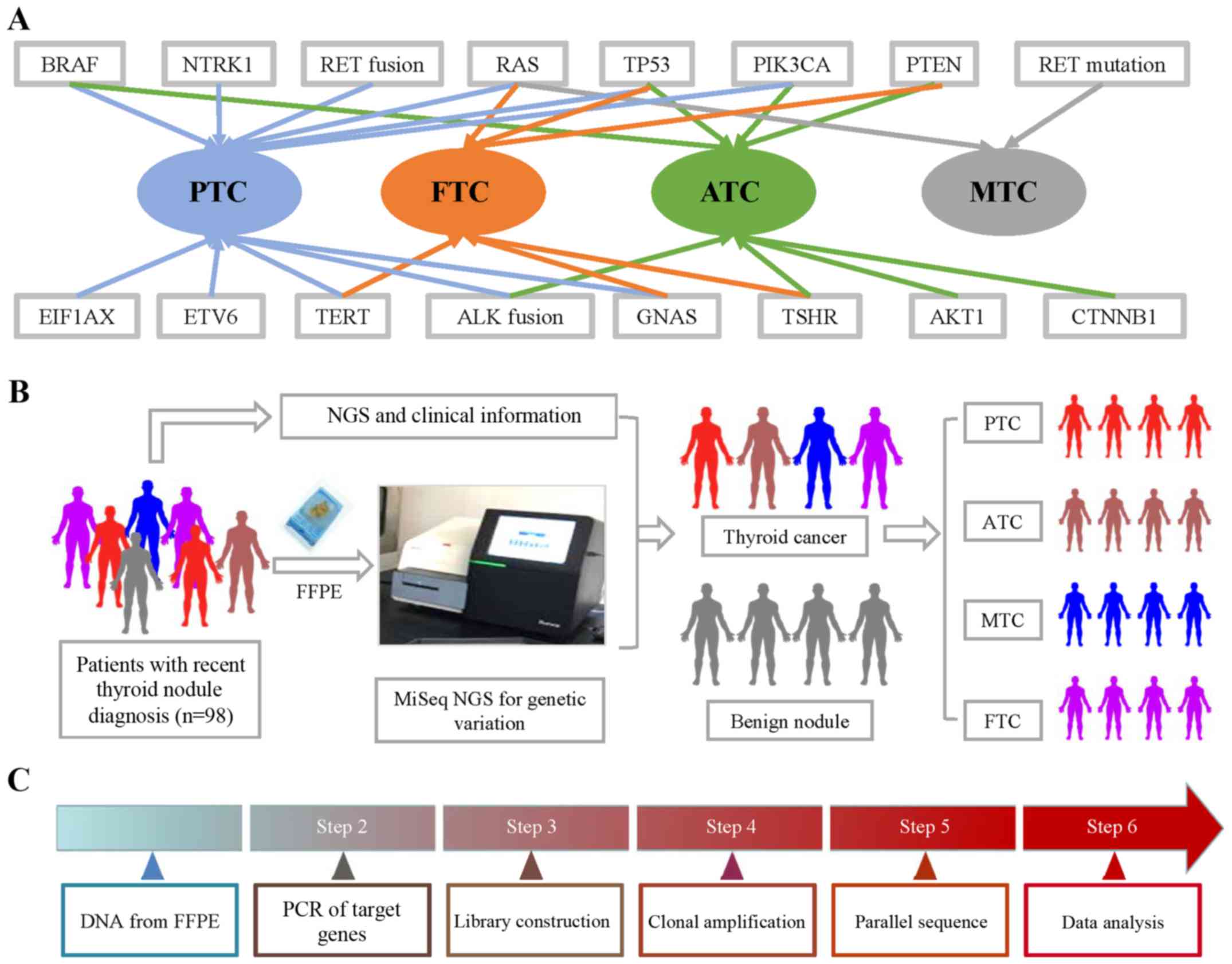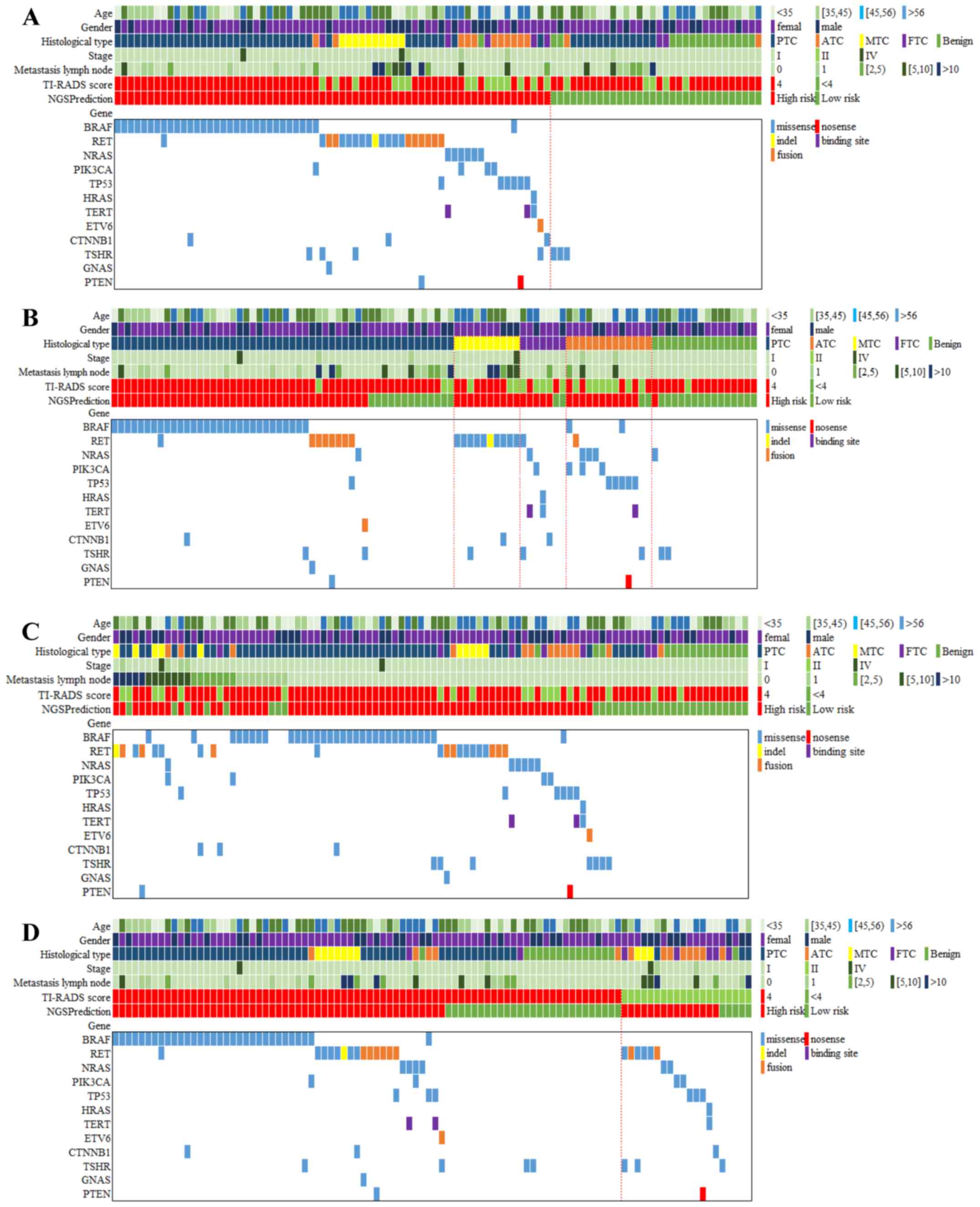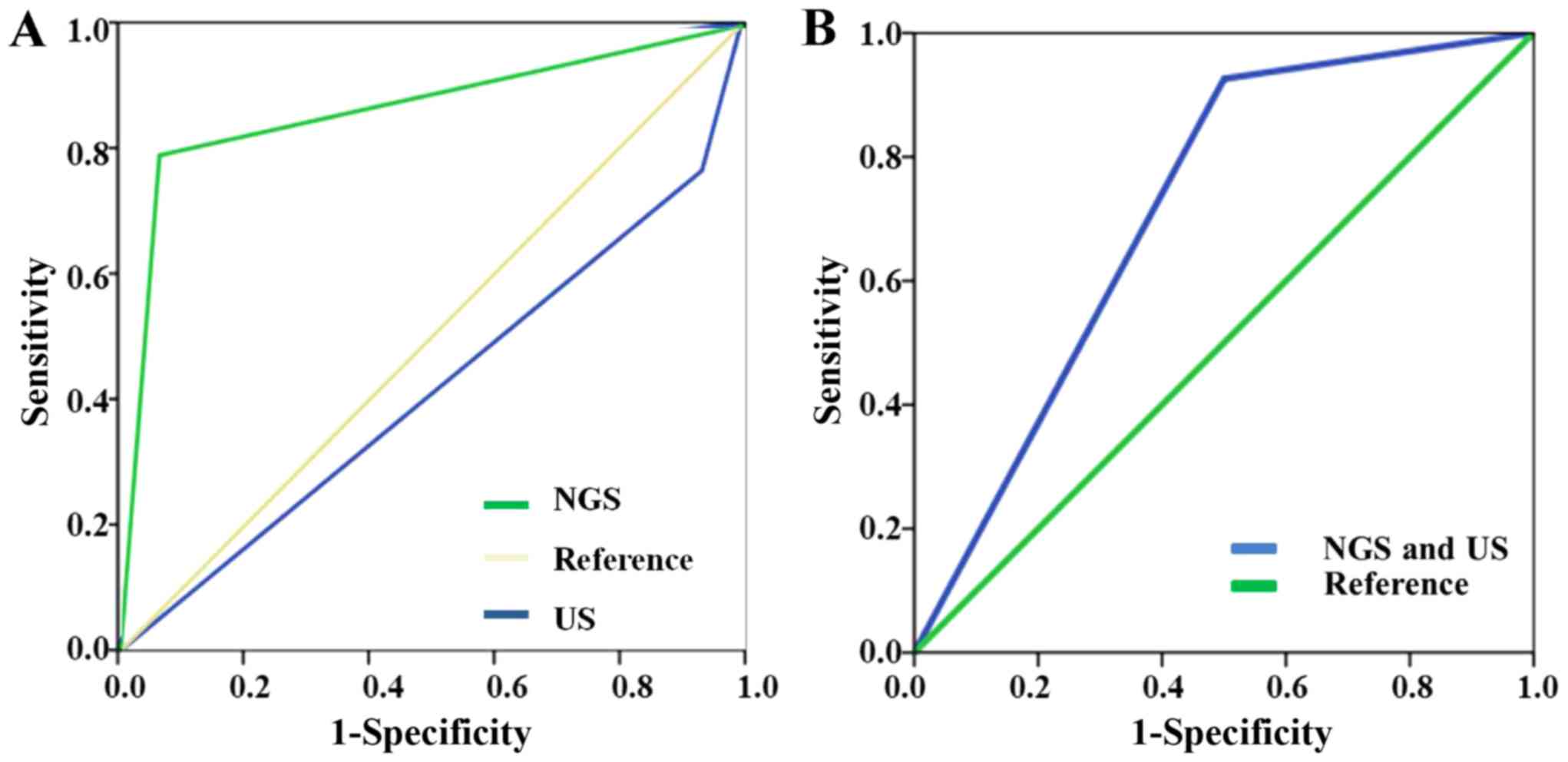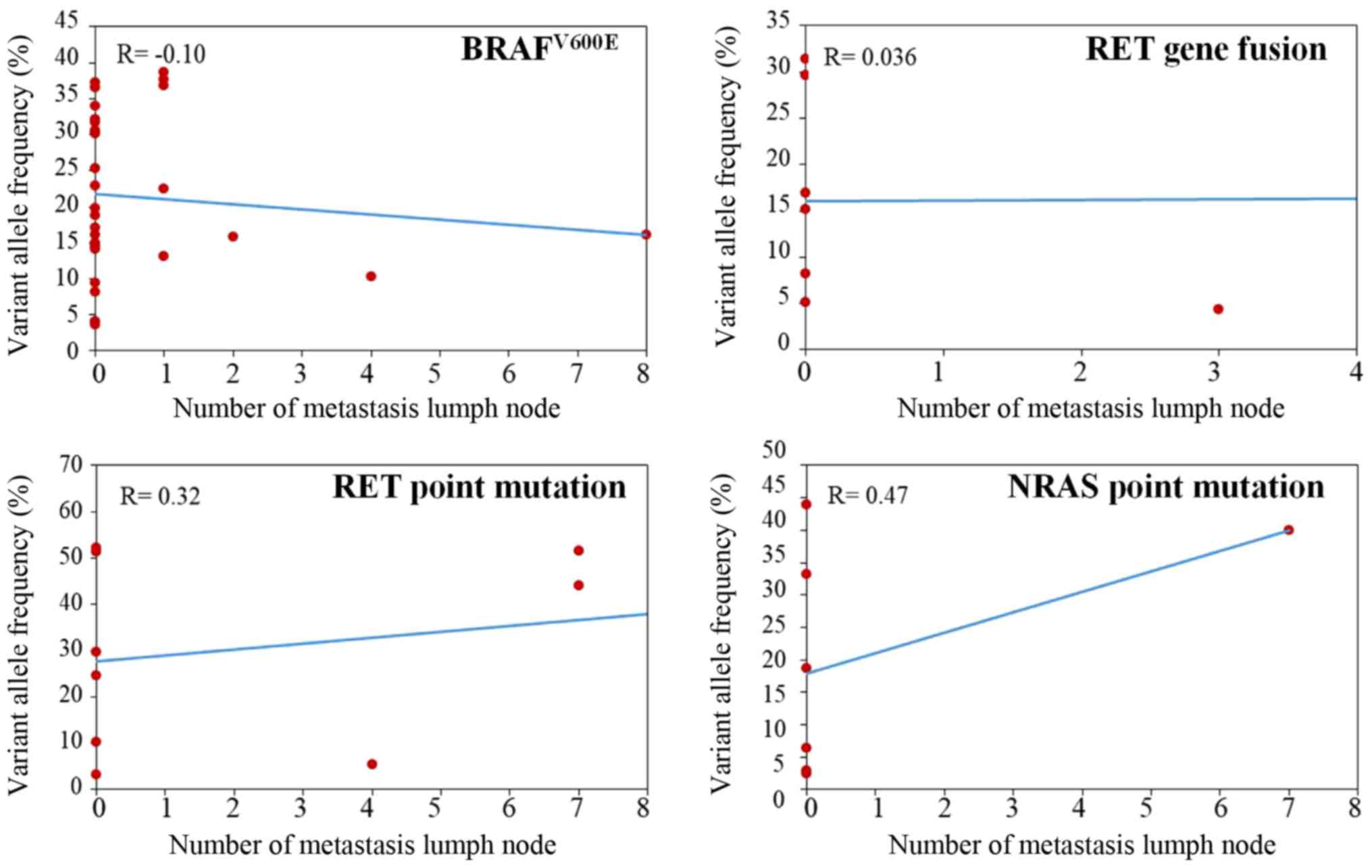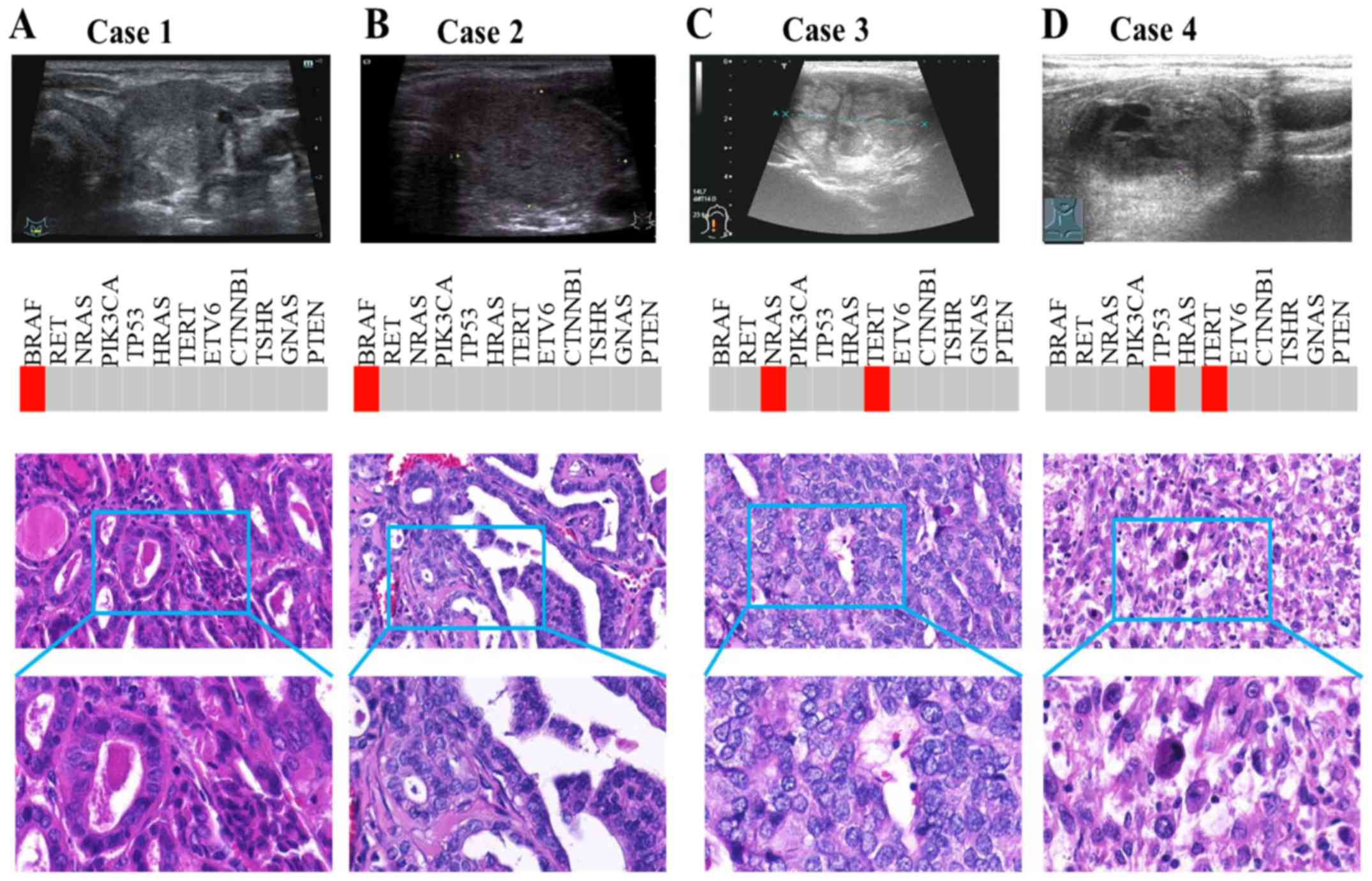|
1
|
Kilfoy BA, Zheng T, Holford TR, Han X,
Ward MH, Sjodin A, Zhang Y, Bai Y, Zhu C, Guo GL, et al:
International patterns and trends in thyroid cancer incidence,
1973–2002. Cancer Causes Control. 20:525–531. 2009. View Article : Google Scholar : PubMed/NCBI
|
|
2
|
Rego-Iraeta A, Perez-Mendez LF, Mantinan B
and Garcia-Mayor RV: Time trends for thyroid cancer in northwestern
Spain: Τrue rise in the incidence of micro and larger forms of
papillary thyroid carcinoma. Thyroid. 19:333–340. 2009. View Article : Google Scholar : PubMed/NCBI
|
|
3
|
Dal Maso L, Lise M, Zambon P, Falcini F,
Crocetti E, Serraino D, Cirilli C, Zanetti R, Vercelli M, Ferretti
S, et al: AIRTUM Working Group Incidence of thyroid cancer in
Italy, 1991–2005: Time trends and age-period-cohort effects. Ann
Oncol. 22:957–963. 2011. View Article : Google Scholar : PubMed/NCBI
|
|
4
|
Haggar FA, Preen DB, Pereira G, Holman CD
and Einarsdottir K: Cancer incidence and mortality trends in
Australian adolescents and young adults, 1982–2007. BMC Cancer.
12:1512012. View Article : Google Scholar : PubMed/NCBI
|
|
5
|
Ellison LF and Wilkins K: Canadian trends
in cancer prevalence. Health Rep. 23:7–16. 2012.PubMed/NCBI
|
|
6
|
Gharib H, Papini E, Garber JR, Duick DS,
Harrell RM, Hegedüs L, Paschke R, Valcavi R and Vitti P;
AACE/ACE/AME Task Force on Thyroid Nodules: American Association of
Clinical Endocrinologists, American College of Endocrinology, and
Associazione Medici Endocrinologi medical guidelines for clinical
practice for the diagnosis and management of thyroid nodules - 2016
Update. Endocr Pract. 22:622–639. 2016. View Article : Google Scholar : PubMed/NCBI
|
|
7
|
Moo TA, McGill J, Allendorf J, Lee J,
Fahey T III and Zarnegar R: Impact of prophylactic central neck
lymph node dissection on early recurrence in papillary thyroid
carcinoma. World J Surg. 34:1187–1191. 2010. View Article : Google Scholar : PubMed/NCBI
|
|
8
|
Haugen BR, Alexander EK, Bible KC, Doherty
GM, Mandel SJ, Nikiforov YE, Pacini F, Randolph GW, Sawka AM,
Schlumberger M, et al: 2015 American Thyroid Association management
guidelines for adult patients with thyroid nodules and
differentiated thyroid cancer: The American Thyroid Association
Guidelines Task Force on thyroid nodules and differentiated thyroid
cancer. Thyroid. 26:1–133. 2016. View Article : Google Scholar : PubMed/NCBI
|
|
9
|
Kim SJ, Moon WK and Cho N: Sonographic
criteria for fine-needle aspiration cytology in a Korean female
population undergoing thyroid ultrasound screening. Acta Radiol.
51:475–481. 2010. View Article : Google Scholar : PubMed/NCBI
|
|
10
|
Nikiforov YE, Carty SE, Chiosea SI, Coyne
C, Duvvuri U, Ferris RL, Gooding WE, Hodak SP, LeBeau SO, Ohori NP,
et al: Highly accurate diagnosis of cancer in thyroid nodules with
follicular neoplasm/suspicious for a follicular neoplasm cytology
by ThyroSeq v2 next-generation sequencing assay. Cancer.
120:3627–3634. 2014. View Article : Google Scholar : PubMed/NCBI
|
|
11
|
Suh YJ, Son EJ, Moon HJ, Kim EK, Han KH
and Kwak JY: Utility of thyroglobulin measurements in fine-needle
aspirates of space occupying lesions in the thyroid bed after
thyroid cancer operations. Thyroid. 23:280–288. 2013. View Article : Google Scholar : PubMed/NCBI
|
|
12
|
Nikiforova MN, Wald AI, Roy S, Durso MB
and Nikiforov YE: Targeted next-generation sequencing panel
(ThyroSeq) for detection of mutations in thyroid cancer. J Clin
Endocrinol Metab. 98:E1852–E1860. 2013. View Article : Google Scholar : PubMed/NCBI
|
|
13
|
Hsiao SJ and Nikiforov YE: Molecular
approaches to thyroid cancer diagnosis. Endocr Relat Cancer.
21:T301–T313. 2014.PubMed/NCBI
|
|
14
|
Nikiforov YE, Ohori NP, Hodak SP, Carty
SE, LeBeau SO, Ferris RL, Yip L, Seethala RR, Tublin ME, Stang MT,
et al: Impact of mutational testing on the diagnosis and management
of patients with cytologically indeterminate thyroid nodules: A
prospective analysis of 1056 FNA samples. J Clin Endocrinol Metab.
96:3390–3397. 2011. View Article : Google Scholar : PubMed/NCBI
|
|
15
|
Kwak JY, Han KH, Yoon JH, Moon HJ, Son EJ,
Park SH, Jung HK, Choi JS, Kim BM and Kim EK: Thyroid imaging
reporting and data system for US features of nodules: A step in
establishing better stratification of cancer risk. Radiology.
260:892–899. 2011. View Article : Google Scholar : PubMed/NCBI
|
|
16
|
Cha YJ and Koo JS: Next-generation
sequencing in thyroid cancer. J Transl Med. 14:3222016. View Article : Google Scholar : PubMed/NCBI
|
|
17
|
LeBlanc VG and Marra MA: Next-generation
sequencing approaches in cancer: Where have they brought us and
where will they take us? Cancers (Basel). 7:1925–1958. 2015.
View Article : Google Scholar : PubMed/NCBI
|
|
18
|
Nikiforov YE and Nikiforova MN: Molecular
genetics and diagnosis of thyroid cancer. Nat Rev Endocrinol.
7:569–580. 2011. View Article : Google Scholar : PubMed/NCBI
|
|
19
|
Chiosea S, Nikiforova M, Zuo H, Ogilvie J,
Gandhi M, Seethala RR, Ohori NP and Nikiforov Y: A novel complex
BRAF mutation detected in a solid variant of papillary thyroid
carcinoma. Endocr Pathol. 20:122–126. 2009. View Article : Google Scholar : PubMed/NCBI
|
|
20
|
Lemoine NR, Mayall ES, Wyllie FS, Williams
ED, Goyns M, Stringer B and Wynford-Thomas D: High frequency of ras
oncogene activation in all stages of human thyroid tumorigenesis.
Oncogene. 4:159–164. 1989.PubMed/NCBI
|
|
21
|
Motoi N, Sakamoto A, Yamochi T, Horiuchi
H, Motoi T and Machinami R: Role of ras mutation in the progression
of thyroid carcinoma of follicular epithelial origin. Pathol Res
Pract. 196:1–7. 2000. View Article : Google Scholar : PubMed/NCBI
|
|
22
|
Kloos RT, Eng C, Evans DB, Francis GL,
Gagel RF, Gharib H, Moley JF, Pacini F, Ringel MD, Schlumberger M,
et al: American Thyroid Association Guidelines Task Force Medullary
thyroid cancer: Management guidelines of the American Thyroid
Association. Thyroid. 19:565–612. 2009. View Article : Google Scholar : PubMed/NCBI
|
|
23
|
Jeong SH, Hong HS, Kwak JJ and Lee EH:
Analysis of RAS mutation and PAX8/PPARγ rearrangements in
follicular-derived thyroid neoplasms in a Korean population:
Frequency and ultrasound findings. J Endocrinol Invest. 38:849–857.
2015. View Article : Google Scholar : PubMed/NCBI
|
|
24
|
Song YS, Lim JA, Choi H, Won JK, Moon JH,
Cho SW, Lee KE, Park YJ, Yi KH, Park DJ, et al: Prognostic effects
of TERT promoter mutations are enhanced by coexistence with BRAF or
RAS mutations and strengthen the risk prediction by the ATA or TNM
staging system in differentiated thyroid cancer patients. Cancer.
122:1370–1379. 2016. View Article : Google Scholar : PubMed/NCBI
|
|
25
|
Landa I, Ganly I, Chan TA, Mitsutake N,
Matsuse M, Ibrahimpasic T, Ghossein RA and Fagin JA: Frequent
somatic TERT promoter mutations in thyroid cancer: Higher
prevalence in advanced forms of the disease. J Clin Endocrinol
Metab. 98:E1562–E1566. 2013. View Article : Google Scholar : PubMed/NCBI
|
|
26
|
Frank-Raue K, Rondot S and Raue F:
Molecular genetics and phenomics of RET mutations: Impact on
prognosis of MTC. Mol Cell Endocrinol. 322:2–7. 2010. View Article : Google Scholar : PubMed/NCBI
|
|
27
|
Lado-Abeal J, Celestino R, Bravo SB,
Garcia-Rendueles ME, de la Calzada J, Castro I, Castro P, Espadinha
C, Palos F, Soares P, et al: Identification of a paired box gene
8-peroxisome proliferator-activated receptor γ (PAX8-PPARγ)
rearrangement mosaicism in a patient with an autonomous functioning
follicular thyroid carcinoma bearing an activating mutation in the
TSH receptor. Endocr Relat Cancer. 17:599–610. 2010. View Article : Google Scholar : PubMed/NCBI
|
|
28
|
Kim SH, Kang JG, Kim CS, Ihm SH, Choi MG,
Yoo HJ and Lee SJ: 17-Allylamino-17-demethoxygeldanamycin and
herbimycin A induce cell death by modulating β-catenin and PI3K/AKT
signaling in FRO anaplastic thyroid carcinoma cells. Anticancer
Res. 35:5453–5460. 2015.PubMed/NCBI
|
|
29
|
García-Rostán G, Costa AM, Pereira-Castro
I, Salvatore G, Hernandez R, Hermsem MJ, Herrero A, Fusco A,
Cameselle- Teijeiro J and Santoro M: Mutation of the PIK3CA gene in
anaplastic thyroid cancer. Cancer Res. 65:10199–10207. 2005.
View Article : Google Scholar : PubMed/NCBI
|
|
30
|
Jeh SK, Jung SL, Kim BS and Lee YS:
Evaluating the degree of conformity of papillary carcinoma and
follicular carcinoma to the reported ultrasonographic findings of
malignant thyroid tumor. Korean J Radiol. 8:192–197. 2007.
View Article : Google Scholar : PubMed/NCBI
|
|
31
|
Machens A, Holzhausen HJ and Dralle H: The
prognostic value of primary tumor size in papillary and follicular
thyroid carcinoma. Cancer. 103:2269–2273. 2005. View Article : Google Scholar : PubMed/NCBI
|
|
32
|
Lee YC, Shin SY, Kwon KH and Eun YG:
Incidence and clinical characteristics of prelaryngeal lymph node
metastasis in papillary thyroid cancer. Eur Arch Otorhinolaryngol.
270:2547–2550. 2013. View Article : Google Scholar : PubMed/NCBI
|
|
33
|
Noguchi M, Yamada H, Ohta N, Ishida T,
Tajiri K, Fujii H and Miyazaki I: Regional lymph node metastases in
well-differentiated thyroid carcinoma. Int Surg. 72:100–103.
1987.PubMed/NCBI
|
|
34
|
Rotstein L: The role of lymphadenectomy in
the management of papillary carcinoma of the thyroid. J Surg Oncol.
99:186–188. 2009. View Article : Google Scholar : PubMed/NCBI
|
|
35
|
Xing M: BRAF mutation in papillary thyroid
cancer: Pathogenic role, molecular bases, and clinical
implications. Endocr Rev. 28:742–762. 2007. View Article : Google Scholar : PubMed/NCBI
|
|
36
|
Kim TH, Park YJ, Lim JA, Ahn HY, Lee EK,
Lee YJ, Kim KW, Hahn SK, Youn YK, Kim KH, et al: The association of
the BRAF(V600E) mutation with prognostic factors and poor clinical
outcome in papillary thyroid cancer: A meta-analysis. Cancer.
118:1764–1773. 2012. View Article : Google Scholar : PubMed/NCBI
|
|
37
|
Gouveia C, Can NT, Bostrom A, Grenert JP,
van Zante A and Orloff LA: Lack of association of BRAF mutation
with negative prognostic indicators in papillary thyroid carcinoma:
The University of California, San Francisco, experience. JAMA
Otolaryngol Head Neck Surg. 139:1164–1170. 2013. View Article : Google Scholar : PubMed/NCBI
|
|
38
|
Lee KC, Li C, Schneider EB, Wang Y,
Somervell H, Krafft M, Umbricht CB and Zeiger MA: Is BRAF mutation
associated with lymph node metastasis in patients with papillary
thyroid cancer? Surgery. 152:977–983. 2012. View Article : Google Scholar : PubMed/NCBI
|
|
39
|
Liu X, Bishop J, Shan Y, Pai S, Liu D,
Murugan AK, Sun H, El-Naggar AK and Xing M: Highly prevalent TERT
promoter mutations in aggressive thyroid cancers. Endocr Relat
Cancer. 20:603–610. 2013. View Article : Google Scholar : PubMed/NCBI
|
|
40
|
Melo M, da Rocha AG, Vinagre J, Batista R,
Peixoto J, Tavares C, Celestino R, Almeida A, Salgado C, Eloy C, et
al: TERT promoter mutations are a major indicator of poor outcome
in differentiated thyroid carcinomas. J Clin Endocrinol Metab.
99:E754–E765. 2014. View Article : Google Scholar : PubMed/NCBI
|
|
41
|
Xing M, Liu R, Liu X, Murugan AK, Zhu G,
Zeiger MA, Pai S and Bishop J: BRAF V600E and TERT promoter
mutations cooperatively identify the most aggressive papillary
thyroid cancer with highest recurrence. J Clin Oncol. 32:2718–2726.
2014. View Article : Google Scholar : PubMed/NCBI
|
|
42
|
Melo M, Gaspar da Rocha A, Batista R,
Vinagre J, Martins MJ, Costa G, Ribeiro C, Carrilho F, Leite V,
Lobo C, et al: TERT, BRAF, and NRAS in primary thyroid cancer and
metastatic disease. J Clin Endocrinol Metab. 102:1898–1907. 2017.
View Article : Google Scholar : PubMed/NCBI
|
|
43
|
Sun J, Zhang J, Lu J, Gao J, Ren X, Teng
L, Duan H, Lin Y, Li X, Zhang B, et al: BRAF V600E and TERT
promoter mutations in papillary thyroid carcinoma in Chinese
patients. PLoS One. 11:e01533192016. View Article : Google Scholar : PubMed/NCBI
|
|
44
|
Jin L, Chen E, Dong S, Cai Y, Zhang X,
Zhou Y, Zeng R, Yang F, Pan C, Liu Y, et al: BRAF and TERT promoter
mutations in the aggressiveness of papillary thyroid carcinoma: A
study of 653 patients. Oncotarget. 7:18346–18355. 2016. View Article : Google Scholar : PubMed/NCBI
|
|
45
|
Shi X, Liu R, Qu S, Zhu G, Bishop J, Liu
X, Sun H, Shan Z, Wang E, Luo Y, et al: Association of TERT
promoter mutation 1,295,228 C>T with BRAF V600E mutation, older
patient age, and distant metastasis in anaplastic thyroid cancer. J
Clin Endocrinol Metab. 100:E632–E637. 2015. View Article : Google Scholar : PubMed/NCBI
|



